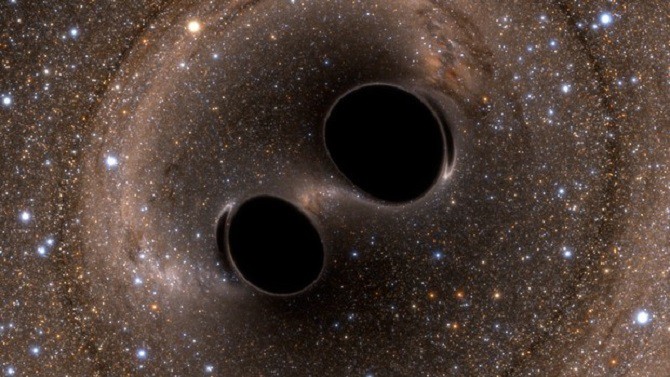
An optical clock has been used to set new constraints on a proposed theory of dark matter. Researchers including Jun Ye at JILA at the University of Colorado, Boulder and Andrei Derevianko at the University of Nevada, Reno, explored how the coupling between regular matter and “ultralight” dark matter particles could be detected using the clock in conjunction with an ultra-stable optical cavity. With future upgrades to the performance of optical clocks, their approach could become an important tool in the search for dark matter.
Although it appears to account for about 85% of the matter in the universe, physicists know very little about dark matter. Most theoretical and experimental work so far has been focussed on hypothetical dark-matter particles, including WIMPS and axions, which have relatively large masses. Alternatively, some physicists have proposed the existence of “ultralight” dark matter particles with extremely small masses that span many orders of magnitude (10−16–10−21 eV/c2).
According to the laws of quantum mechanics, the very smallest of these particles would have huge wavelengths, comparable to the sizes of entire dwarf galaxies – meaning they would behave like classical fields on scales we can easily measure.
Atomic energy levels
If these fields coupled to normal matter, these ultralight particles would generate oscillations in the values of fundamental physical constants. This includes the mass of the electron and the fine structure constant, which defines the strength of the electromagnetic interaction between charged particles. Both constants affect the energy levels of atoms, which are used in the operation of atomic clocks. Therefore, subtle variations in these fundamental constants would affect the timekeeping of an atomic clock.

Atomic clocks could detect exotic low-mass fields from merging black holes
In their study, Ye and colleagues measured the ratio between time signals produced by a strontium optical lattice clock (a type of atomic clock) and a resonant optical cavity made of silicon. This ratio should be extremely sensitive to the effects of ultralight dark matter particles. They also compared the frequency of the silicon cavity to that of a hydrogen maser – a microwave device that is used as a very precise frequency standard and has been used in previous dark-matter searches.
As expected, the maser was the noisiest device, and the team has concluded that the optical clock and silicon cavity combination is best for searching for dark matter. Indeed, they have set new constraints on the masses of ultralight particles, which they hope will improve as optical clocks get better. With suitable modifications, the detectors could even be integrated into satellites, producing the first global-scale telescopes for dark matter.
The research is described in Physical Review Letters.
- In the Physics World Weekly podcast, Andrei Derevianko explains how atomic clocks and other quantum sensors could be used to detect dark matter.
